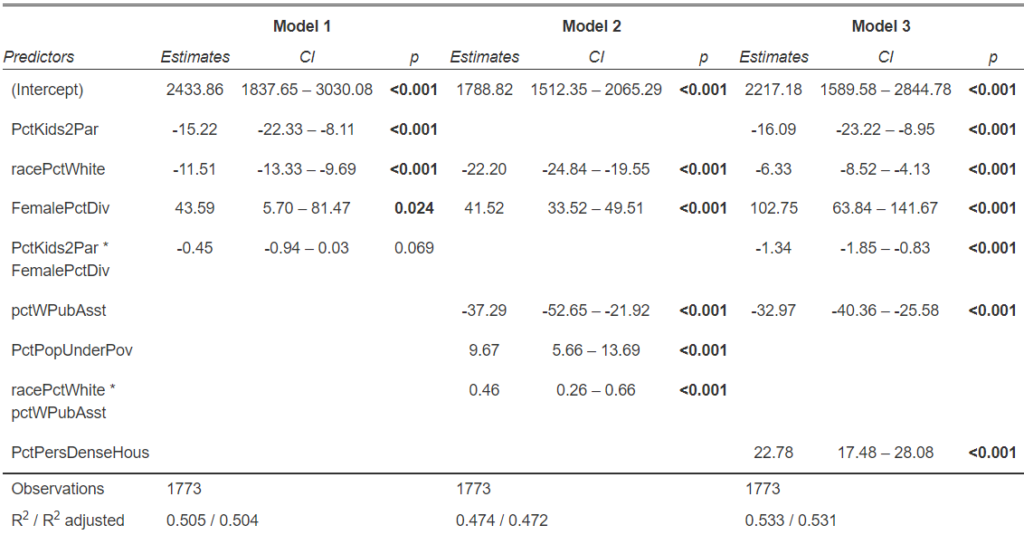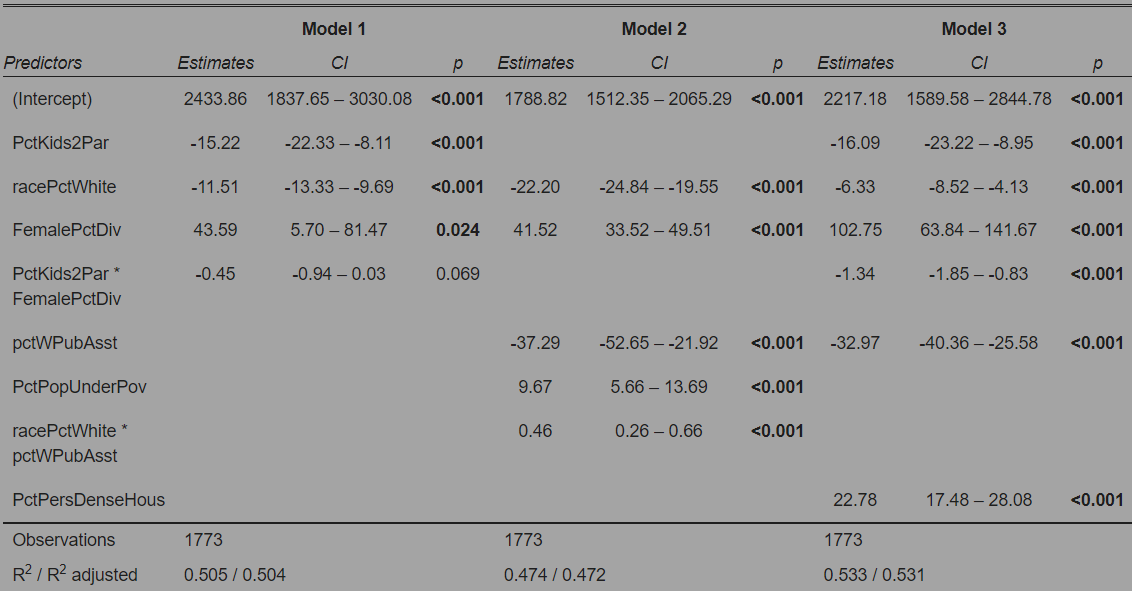Any surface-level analysis may conclude otherwise. After all one would expect that if nothing else poverty positively correlates with crime, so why wouldn’t aid for the poor – which would be prevalent where there is poverty – also be correlated with crime?
Well it is, but not so simply. That much can be ascertained at least from my work modeling US crime data from 1995 using variables from the 1990 US Census. In that dataset the proportion of residents on public assistance has a 0.56 correlation coefficient with violent crime rates.
Such findings align with statements from the CATO Institute also made in 1995. According to Michael Tanner, then director of health and welfare studies at CATO, US Health and Human Services research, “showed that a 50 percent increase in the monthly value of combined AFDC and food stamp benefits led to a 117 percent increase in the crime rate among young black men.” Why particularly Black men is beyond me, the testimony cites a book without pages while misspelling the publishing institution, Baruch College, my alma mater. So that’s a bit buried.
A similarly critical Heritage Foundation welfare report from 1996 citing work from one of the same USH&H researchers at least specifies, “that young black men raised in single-parent families were twice as likely to engage in criminal activities when compared to black men raised in two-parent families, even after holding constant a wide range of variables such as family income, urban residence, neighborhood environment, and parents’ education.” This is less in dispute: other less partisan think tanks have cited researchers also identifying that Black men are particularly vulnerable to intergenerational poverty, and are far more likely to live in neighborhoods that are both poor and fractured in terms of father-less households. It’s not surprising that researchers are picking up on the multifaceted and unique effects of poverty on Black boys and men
But those unique and layered effects are perhaps why we can’t just draw a bivariate, causal relationship between public assistance and crime. Poverty, which has a positive correlation with crime, Black county population proportions, and by design public assistance, needs to be controlled for if we’re going to understand the true effect of welfare on crime.
And in the case of violent crime rates when I do control for race (white population %) and poverty in addition to measures of births to two parent household, female divorce rates, housing density, and interactions between some of these variables it’s clear that a one percentage point increase in the proportion of the population on welfare is accompanied by a 33 to 37 less violent crimes per person. What this practically means is in an already impoverished environment public assistance access is associated with lower rates of violent crime than otherwise. Between two of the linear regressions I modeled to predict violent crime rates the coefficient for public assistance uptake rates remained reassuringly stable and suggestive of a violent crime suppression effect.

There’s enough literature on this to know it’s not a fluke. Welfare access is shown to be robustly associated with less violent and property crime, even as law enforcement spending may only deter property crime. If cash assistance does reduce violent crime, the way it helps reduce recidivism (in this case, returning to prison within a year) among drug offenders is one potential explanatory mechanism.
In any case public assistance and crime is clearly one example of why simple bivariate correlations – do two things move in the same direction at the same time – aren’t reliable for analyzing public policies impacted by complex social trends.
